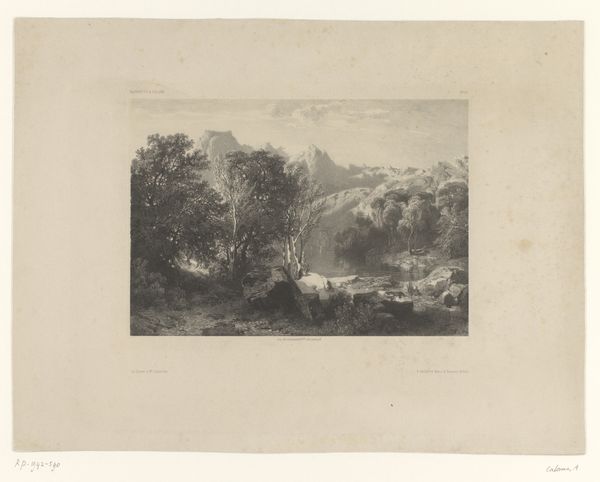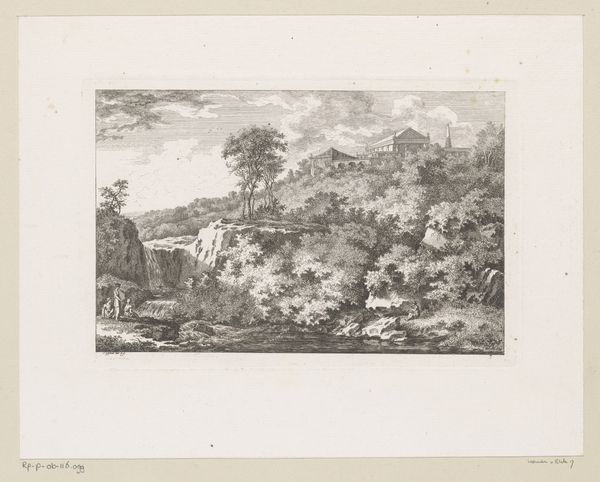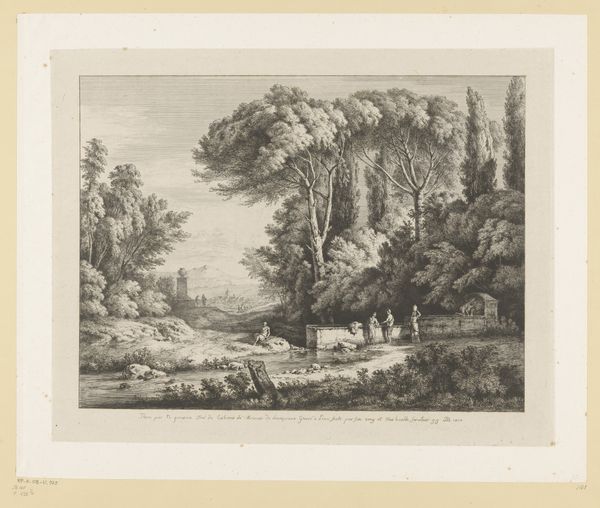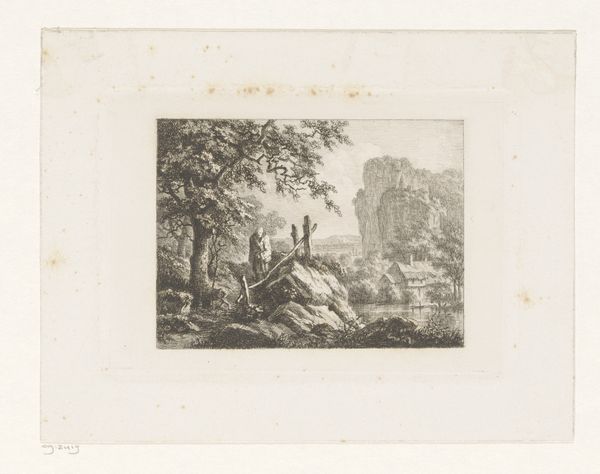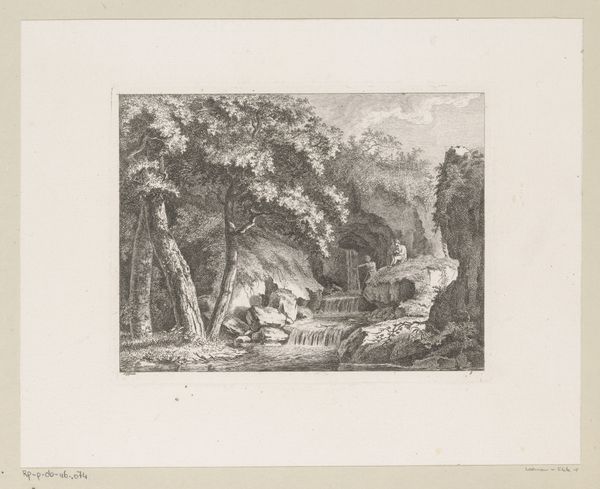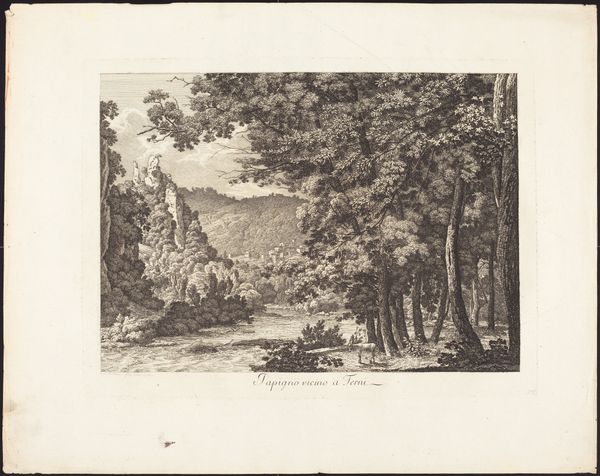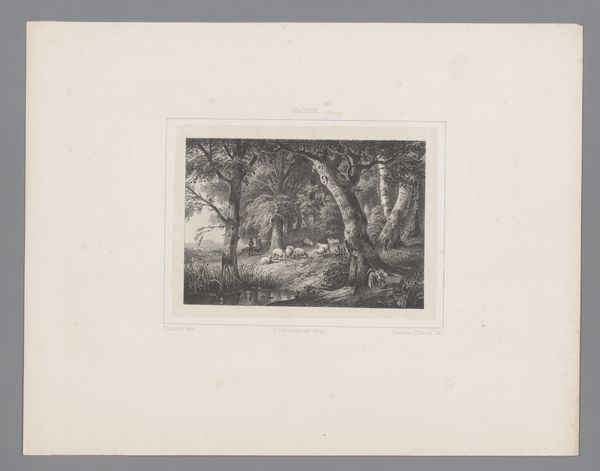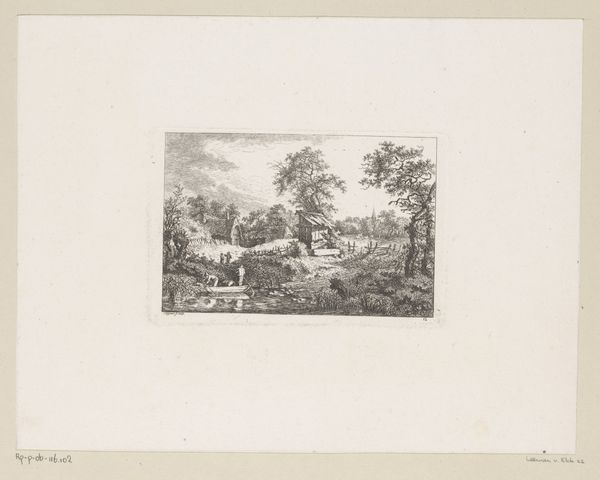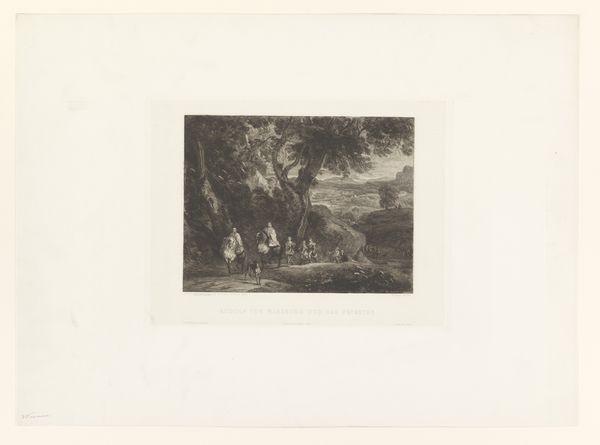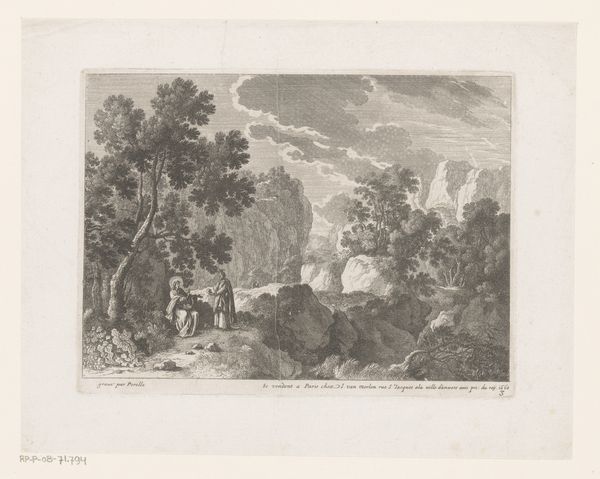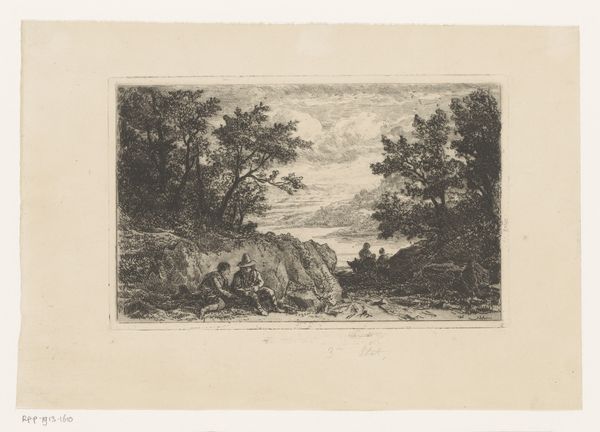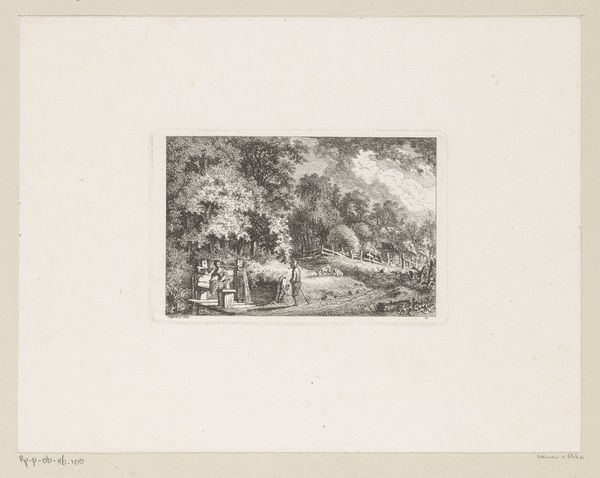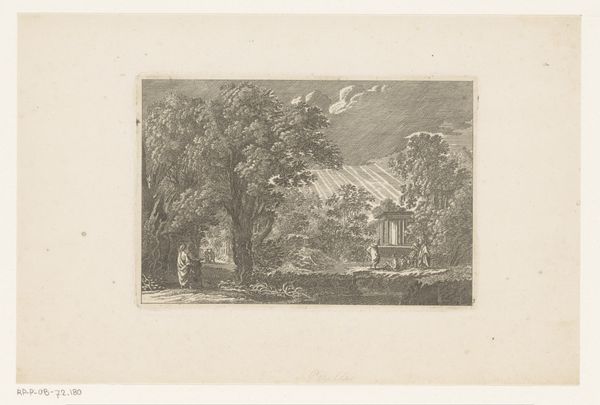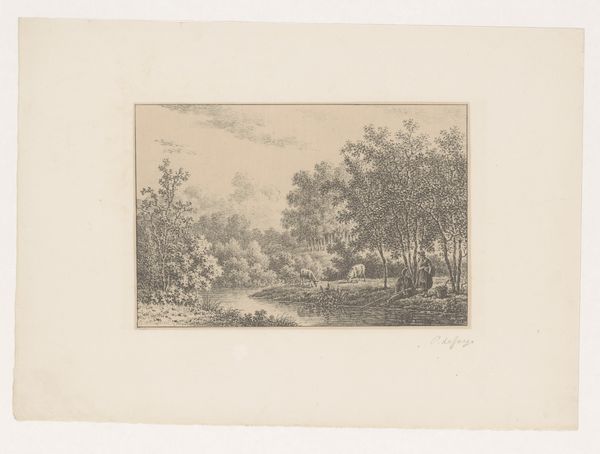
Dimensions: height 109 mm, width 166 mm
Copyright: Rijks Museum: Open Domain
Curator: Before us is "Bathing Herders by a Waterfall" by Salomon Gessner, created in 1768. It is an engraving, printed in ink on paper. Editor: The idyllic setting is very pleasing; the landscape appears to hold center stage, though there are figures that subtly invite you into this secluded scene. The light and shade are remarkable. Curator: Indeed. Gessner was quite the craftsman, and printmaking served as a vital way for disseminating such idyllic visions of rural life to a broader audience. It provided a template. Editor: Templates? The structure itself feels incredibly balanced, from the placement of the figures relative to the waterfall, to the little architectural structure, likely a temple, overseeing the composition in the distance. Curator: Think of it in the context of the Enlightenment! Gessner was part of a literary and artistic circle promoting simplicity, a natural life in contrast to courtly life and elaborate decoration. Consider that materials like ink and paper facilitated this accessibility, shifting the value assigned to "high art." Editor: That might well be. I still note how the medium influences my perception of form. The sharp lines, combined with a balanced composition, invite me into its ordered romanticism. How fascinating to capture a scene where nature and people coalesce so seamlessly! Curator: Right, and it is not just about pure aesthetics here, is it? Think about how these printed images found their way into bourgeois homes, contributing to evolving concepts of leisure and nature itself as a place of leisure, produced by labor. Editor: It appears labor gave this sense of effortless beauty! This balance creates a harmonic contrast between form and texture—which helps focus my thoughts! Curator: These artworks remind us to see nature itself is constructed. That what appears ‘natural’ has often involved substantial production of labor to access, make palatable and reproducible. Editor: The conversation between form, material, and content is much richer for considering both production and pure visual impact.
Comments
No comments
Be the first to comment and join the conversation on the ultimate creative platform.
